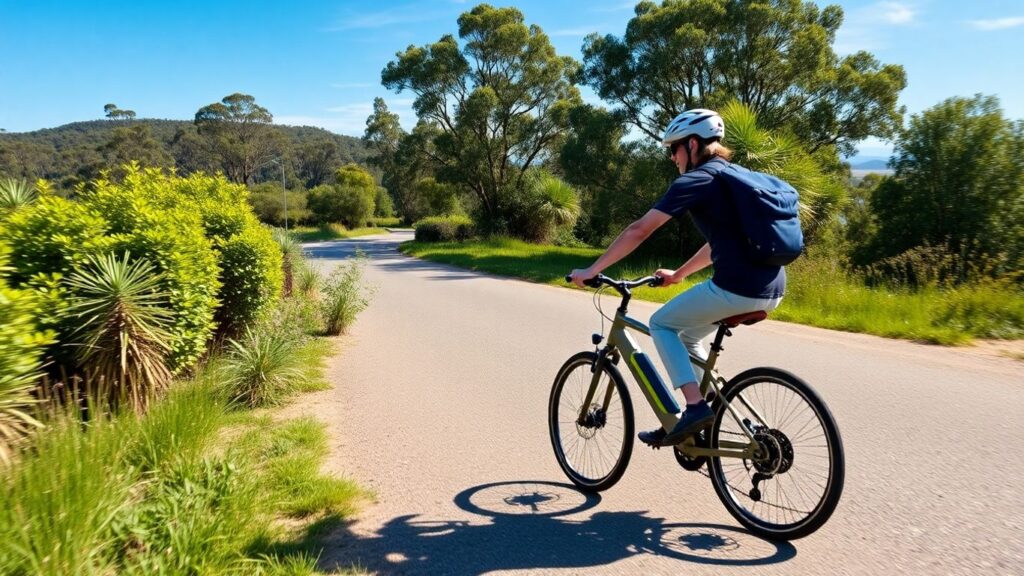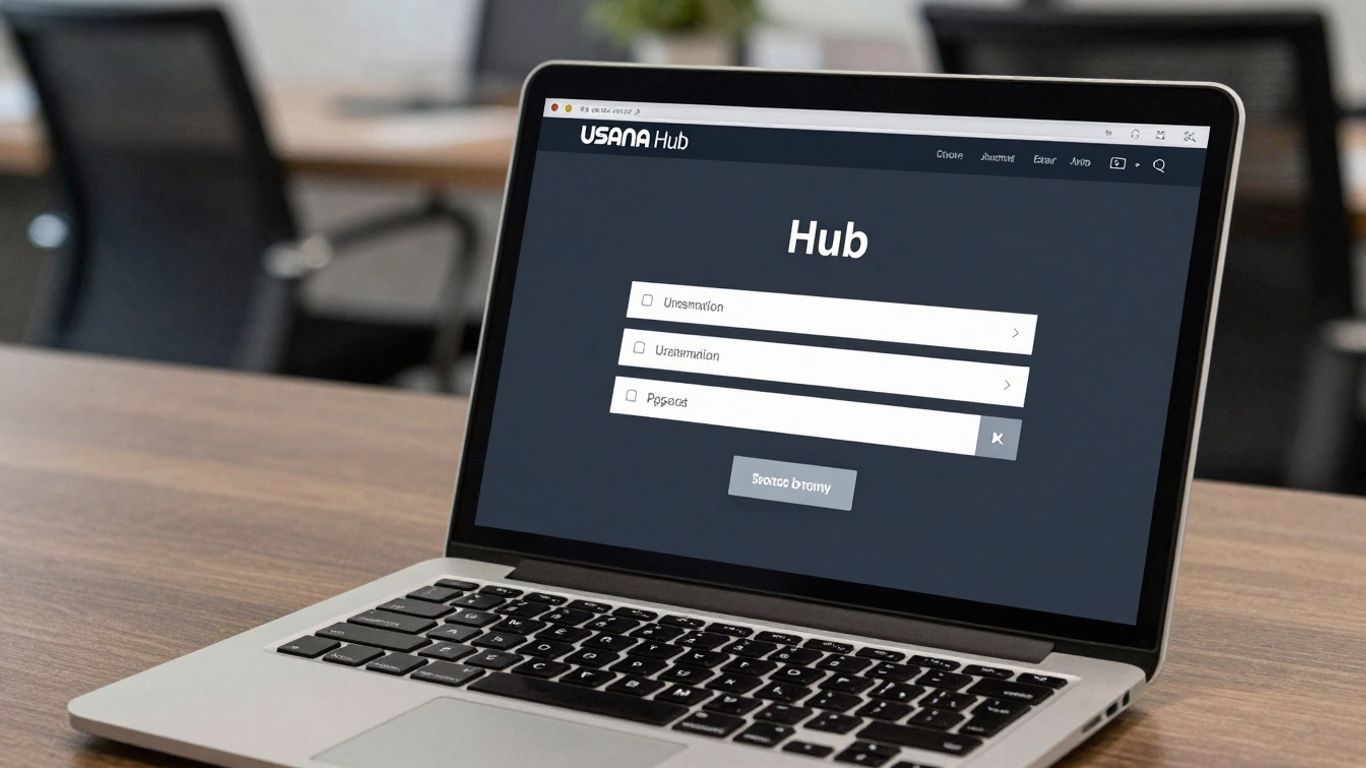Electric bikes, or ebikes, are becoming super popular across Australia, and for good reason. They make getting around easier and more fun, whether you’re commuting to work or just out for a leisurely ride. But with this rise in popularity comes a need to chat about staying safe. We’re talking about ebike safety Australia-wide, making sure everyone who hops on one of these bikes knows the score. Let’s look at some straightforward tips to keep you and everyone else on the road safe.
Key Takeaways
- Always wear a well-fitting helmet and consider gloves and reflective clothing for better visibility and protection.
- Familiarise yourself with Australia’s ebike laws, including speed limits (usually 25 km/h) and state-specific rules.
- Regularly check your ebike’s brakes, tyres, and all components, and keep the battery charged and stored safely.
- Practice your riding skills in quiet areas before hitting busy streets, and always stay alert.
- Be mindful of other road users, follow traffic rules, and use signals to communicate your intentions clearly.
Understanding Ebike Laws and Regulations in Australia
Alright, so you’ve got yourself an ebike, or you’re thinking about it. That’s awesome! They’re a ripper way to get around. But before you zip off into the sunset, we gotta chat about the rules of the road here in Australia. It’s not super complicated, but knowing your stuff keeps you out of trouble and, more importantly, safe.
Adhering to Local Road Rules
Basically, when you’re on an ebike, you’re generally expected to follow the same rules as a regular cyclist. That means obeying traffic lights, stopping at stop signs, and using bike lanes when they’re available. Don’t be that person who weaves through traffic or ignores a red light – it’s just not worth the risk, and it annoys everyone else.
- Always signal your intentions when turning or changing lanes. A simple hand signal goes a long way.
- Give way to pedestrians, especially on shared paths or footpaths where they have priority.
- Be predictable. Ride in a straight line and avoid sudden movements that could surprise other road users.
It’s a good idea to have a quick look at your local council’s website or the state’s transport department page. They usually have a section on cycling and e-bike rules that’s easy to understand.
Understanding Ebike Speed Limits
This is a big one. In Australia, for an ebike to be classified as a ‘pedal cycle’ and not need registration or a licence, it generally has to meet certain power and speed restrictions. The most common limit you’ll hear about is 25 kilometres per hour. If your ebike can go faster than this on its own power (without you pedalling), or if its motor is more powerful than 250 watts, it might be classified differently, and that’s where things get tricky.
- 25 km/h limit: This is the standard for most ebikes to be considered ‘pedal assisted’ and legal on bike paths and roads without special permits.
- Motor power: Typically, a 250-watt motor is the maximum allowed for this classification.
- Check your bike’s specs: Make sure you know what your ebike is capable of. If you’ve modified it to go faster, you could be breaking the law.
Navigating State-Specific Ebike Legislation
While there are national guidelines, each state and territory in Australia can have its own little quirks when it comes to ebike laws. What’s allowed in New South Wales might be slightly different in Queensland or Western Australia. For example, some states might have specific rules about where ebikes can be ridden – like whether they’re allowed on shared paths with pedestrians or only on roads.
- Victoria: Generally follows the 25 km/h and 250W limit for ebikes to be treated as bicycles.
- New South Wales: Similar rules apply, with a focus on pedal-assist ebikes up to 25 km/h.
- Queensland: Ebikes must meet the 25 km/h and 250W criteria to be ridden on roads and cycle paths.
It’s really on you to know the specific rules where you live and ride. A quick search for "ebike laws [your state]" should point you in the right direction. Staying informed means you can ride with confidence, knowing you’re doing things by the book.
Essential Protective Gear for Ebike Riders
Alright, let’s talk about kitting yourself out properly before you hop on your ebike. It’s not just about looking the part; it’s about staying safe out there on the roads and paths. Think of it as your personal safety net.
The Importance of Helmets
This is non-negotiable, folks. A well-fitting helmet is your absolute best defence against serious head injuries if you happen to take a tumble. Studies show helmets can slash your risk of head trauma by a massive amount. Make sure it sits snug, covers your forehead, and the straps are done up right. It might not be the most stylish thing, but your brain will thank you later. You can find a decent range of helmets at places like Pedl electric bike shop.
Visibility Through Reflective Clothing
Ever feel like cars don’t see you? Yeah, me too sometimes. That’s where being visible comes in. Wearing brighter colours, especially during dawn, dusk, or on gloomy days, makes a huge difference. Think about adding reflective strips to your jacket, backpack, or even your shoes. It’s a simple way to make sure other road users spot you coming.
Gloves for Enhanced Grip and Protection
Don’t underestimate a good pair of gloves. They’re not just for keeping your hands warm. Gloves give you a better grip on the handlebars, which is handy when things get a bit bumpy or wet. Plus, if you do fall, your hands are usually the first thing to hit the ground, and gloves offer a decent layer of protection against scrapes and grazes. It’s a small thing, but it adds up to more comfort and safety on your rides.
Maintaining Your Ebike for Optimal Safety

Keeping your electric bike in good nick isn’t just about making it look good or perform well; it’s a big part of staying safe on the road. Think of it like looking after your car – regular checks can stop small issues from turning into major problems.
Regular Brake and Tyre Inspections
Your brakes are probably the most important safety feature on your bike. You want to be able to stop when you need to, right? So, give your brakes a good look over regularly. Check that the brake pads aren’t worn down too much and that the cables or hydraulic lines are in good condition. Squeeze the levers – do they feel firm, or a bit spongy? Spongy brakes mean they might need bleeding or adjusting.
Tyres are your other main point of contact with the road. Make sure they’re inflated to the right pressure – you can usually find this info on the tyre sidewall. Low tyre pressure makes riding harder and can increase the risk of pinch flats. Also, keep an eye out for any cuts, cracks, or bulges in the rubber. Worn-out tyres don’t grip as well, especially in wet conditions.
Keeping Drivetrain Components Clean
Your ebike’s drivetrain – that’s your chain, gears, and pedals – needs a bit of TLC too. A dirty, grimy chain doesn’t just make your bike noisy; it wears out faster and doesn’t shift smoothly. Give it a clean every so often with a degreaser and then re-lube it. A well-maintained drivetrain makes pedalling easier and helps the motor work more efficiently, which is good for both you and the bike’s battery life.
Checking for Loose Bolts and Components
This is a quick one but super important. Vibrations from riding can loosen bolts over time. Before you head out, especially after a longer ride or if you’ve hit a few bumps, do a quick walk-around. Check that your handlebars are tight, your seat post isn’t slipping, and that your wheels are securely fastened. Even small things like loose mudguards can be annoying and, in some cases, a safety hazard.
A little bit of regular maintenance goes a long way in keeping your ebike reliable and safe. Don’t wait until something feels wrong; make checking these parts a habit.
It’s also worth remembering that your ebike’s battery needs care. Make sure it’s securely attached before you ride and follow the manufacturer’s advice on charging and storage. For more on this, check out the battery care section.
Battery Care and Fire Safety for Ebikes
Look, batteries are the heart of your ebike, right? So, taking care of them is a big deal, not just for performance but for keeping things safe. We’ve all heard those stories, and while they’re not super common, a dodgy battery can be a real problem. Using the right charger and battery that came with your bike is non-negotiable. It might seem like a hassle, but it’s the first step in avoiding trouble.
Safe Charging and Storage Practices
Charging your ebike battery isn’t rocket science, but there are a few things to keep in mind. First off, don’t leave it plugged in for days on end after it’s full. Unplug it. Also, try not to charge it in super hot or freezing cold conditions – your garage on a scorching summer day or a frosty winter morning might not be the best spot. It’s best to charge it somewhere with a moderate temperature.
Here’s a quick rundown:
- Always use the charger that was supplied with your ebike, or a certified replacement.
- Avoid charging the battery overnight or for extended periods once it’s at 100%.
- Charge your battery in a well-ventilated area, away from flammable materials.
- Store the battery in a cool, dry place when not in use for extended periods.
Identifying and Addressing Battery Issues
Keep an eye on your battery. If you notice it getting unusually hot while charging or discharging, or if it looks swollen or damaged, stop using it immediately. Seriously, don’t mess around with a damaged battery. It’s worth getting it checked out by a professional or the manufacturer. For example, in NSW, new rules are coming into effect from February 1, 2026, requiring e-micromobility devices and their batteries to be tested and certified for safety. This is part of a push to make things safer for everyone using these bikes, so it’s good to be aware of upcoming safety standards.
Choosing Reputable Ebike Brands
When you’re buying an ebike, don’t just go for the cheapest option you find online. Stick with brands that have a good reputation for quality and safety. They’re more likely to use reliable battery components and have better quality control. It might cost a bit more upfront, but it’s a worthwhile investment for your safety and peace of mind.
Developing Safe Riding Habits on Your Ebike

Getting comfortable with your ebike is key to riding safely. It’s not just about hopping on and going; taking a bit of time to learn how your bike behaves makes a big difference. Think of it like learning to drive a new car – you wouldn’t just floor it straight away, right?
Practicing in Low-Traffic Environments
Before you hit the busy streets, find a quiet spot to get acquainted with your ebike. An empty car park or a quiet, residential street is perfect for this. Here, you can really get a feel for how the pedal assist works at different levels. Try accelerating gently, braking smoothly, and making turns. Get a sense of the bike’s weight and how it handles when you’re not worried about other traffic. Once you’re feeling more confident, you can gradually move to areas with a bit more activity, like roads with light traffic or gentle slopes.
Understanding Ebike Handling and Control
Ebikes can feel a bit different from regular bikes, mainly because of the motor and battery. Often, they have a lower centre of gravity, which actually makes them quite stable, especially at slower speeds. The electric assist means you can get up to speed smoothly, which is handy in traffic. However, remember that the added weight means you’ll need a bit more stopping distance, so always be aware of that. Don’t rely solely on the motor; your own pedalling and braking skills are still super important.
Staying Alert and Focused While Riding
This is a big one. When you’re riding, your main job is to pay attention to what’s happening around you. This means looking out for pedestrians, other cyclists, cars, and any unexpected obstacles like potholes or debris on the road. Try to avoid distractions – no fiddling with your phone or wearing headphones that block out all sound. Being aware of your surroundings helps you react quickly if something unexpected happens, which is pretty much the best way to avoid trouble.
Riding an ebike safely is a skill that improves with practice and awareness. Always be mindful of your speed, your surroundings, and how your bike responds. A little bit of caution goes a long way in making your rides enjoyable and accident-free.
Sharing the Road Safely with Other Users
Riding your e-bike means you’re part of the traffic, and that comes with a responsibility to everyone else out there. It’s not just about you and your bike; it’s about making sure everyone can get where they’re going without any drama. Being considerate and predictable is key to making sure your rides are smooth for you and for others.
Giving Way to Pedestrians and Cyclists
When you’re on shared paths or footpaths, remember that pedestrians and other cyclists are sharing the space with you. Always give way to pedestrians – they’re the most vulnerable users of these paths. This means slowing down or stopping if you need to, especially if there are children or people with mobility issues around. On bike paths, it’s good practice to let faster cyclists pass easily and to be aware of cyclists coming in the opposite direction. It’s all about courtesy and making sure no one feels unsafe or inconvenienced by your presence.
Using Bike Lanes Effectively
Bike lanes are there for a reason, and using them properly helps keep things orderly. Generally, you should stick to the bike lane if one is available. If you need to overtake another cyclist or a slower vehicle, do so on the right if it’s safe. When you’re approaching intersections or need to turn, make sure you position yourself correctly in the lane well in advance. Remember, e-bikes have specific rules regarding where they can be ridden, often permitted on footpaths and shared paths with speed limits, but roads are for short, safe connections when no path is available [674d].
Communicating Intentions with Signals
Being able to communicate your intentions is super important, especially when you’re in busy areas or need to change direction. A simple hand signal can prevent a lot of confusion and potential accidents. Before you turn left or right, extend your arm clearly in that direction. If you need to stop suddenly, a downward pointing hand can signal that. Also, don’t be afraid to use your bell to let pedestrians or other cyclists know you’re approaching, particularly if they might not see or hear you otherwise. It’s better to be a bit noisy than to startle someone.
Ride On Safely
So, there you have it. Ebikes are a fantastic way to get around, whether you’re commuting or just out for a spin. But like anything with a bit of extra power, it pays to be smart about it. Always wear your helmet, know your local rules, and give your bike a quick once-over before you head out. Keeping those bolts tight and your tyres pumped up makes a big difference. Ride safe, look out for others, and enjoy the journey.
Frequently Asked Questions
What are the main speed limits for ebikes in Australia?
Generally, in Australia, ebikes have a motor assistance speed limit of 25 km/h. Pedal assistance will stop once you reach this speed, helping you stay safe and within the law.
Do I need to wear a helmet when riding an ebike?
Absolutely! Wearing a well-fitting helmet is super important. It can significantly lower your risk of serious head injuries if you happen to fall or have a bump.
How often should I check my ebike’s brakes and tyres?
It’s a good idea to check your brakes and tyres regularly, maybe before each ride or at least once a week. Make sure your brakes are working well and your tyres have enough air and aren’t worn out.
What’s the safest way to charge my ebike battery?
Always use the charger that came with your ebike and follow the manufacturer’s instructions. Avoid charging in really hot or cold places, and don’t leave it plugged in for ages after it’s full.
Can I ride my ebike anywhere?
Not quite. You need to follow the same road rules as cyclists. Some places might have specific rules about where ebikes can go, like bike paths or shared zones, so it’s good to know your local laws.
Are ebikes safe compared to regular bikes?
Ebikes are generally safe when ridden responsibly. They have features like good brakes and speed limits. The key is to ride safely, wear protective gear, and keep your bike well-maintained, just like any other bike.





